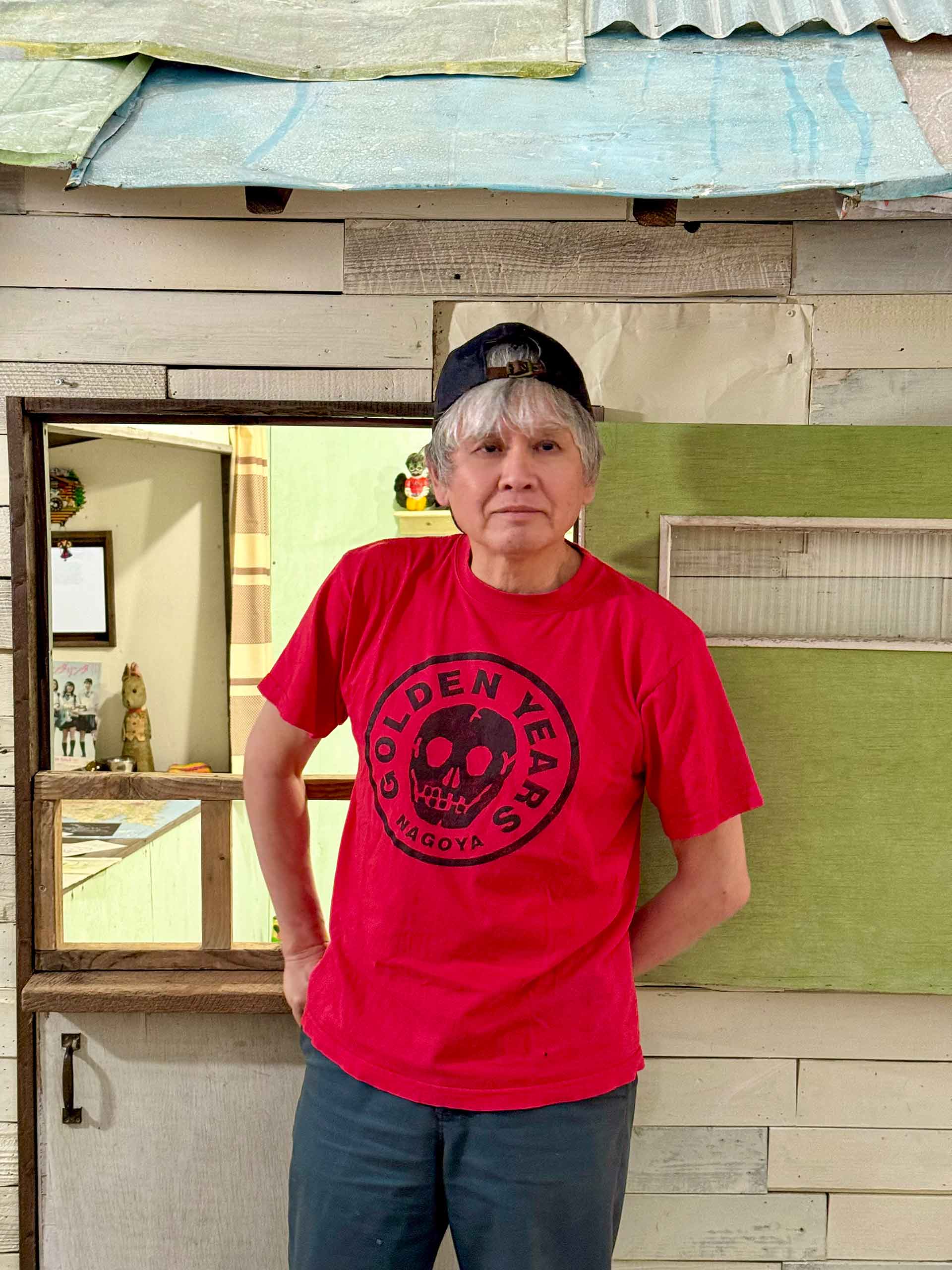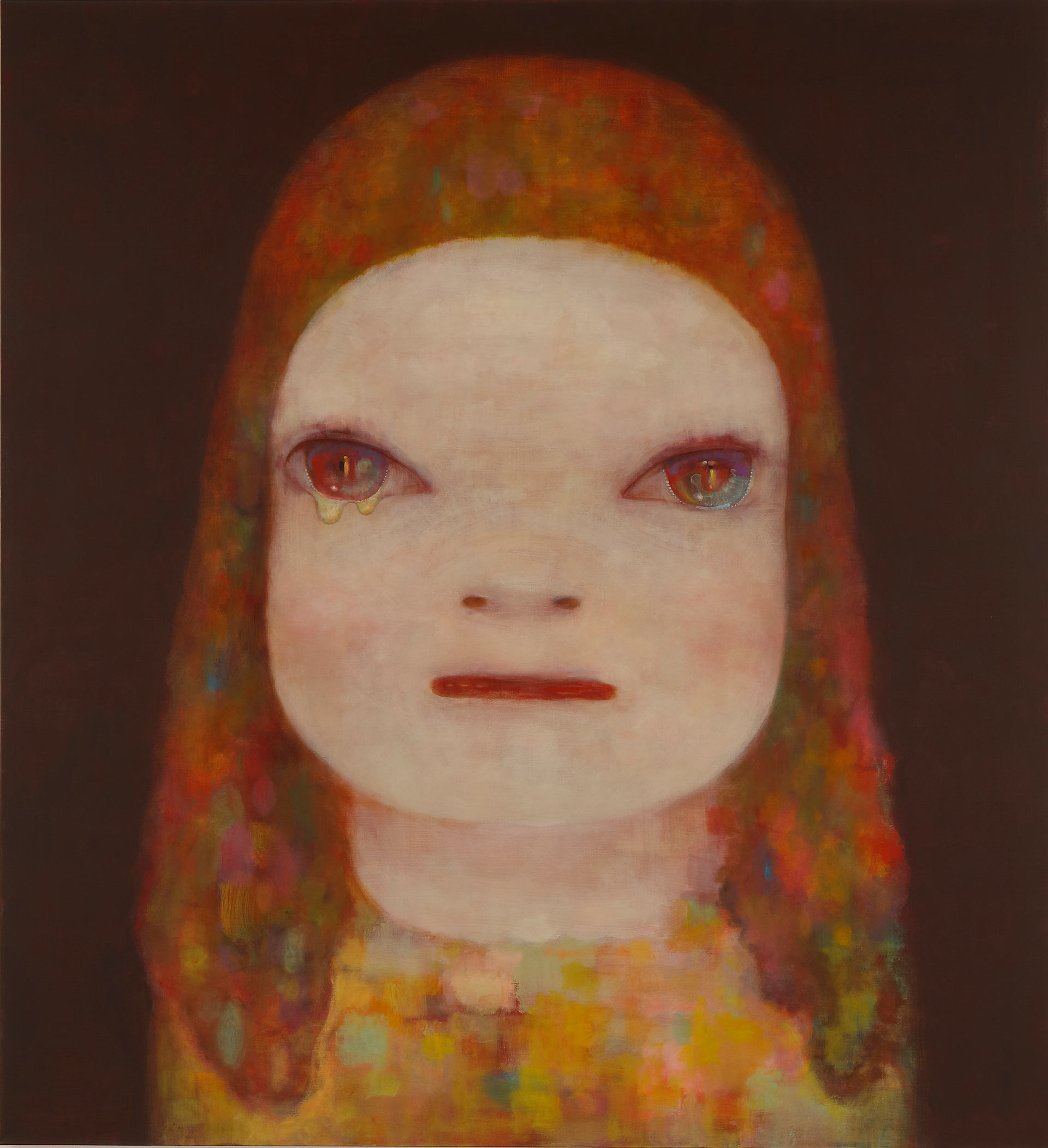Nara, Yoshitomo
Hirosaki, Aomori Prefecture, Japan, 1959

19
59
Born in Hirosaki, Aomori Prefecture, Japan, on December 5.
64
Since both his parents work, he is a “latchkey kid” – children who are at home without adult supervision for some part of the day, especially after school. Likes drawing and making cartoons, using every sheet of paper he finds at home. Grows up surrounded by animals.
70
Manufactures his own old radio – the kind of radio that was popular in those days – and listens to night radio shows. Falls in love with American rock and folk music, with its inspired lyrics against violence in the context of the Vietnam War.
76
Makes piece for his school’s contribution to the Aomori Nebuta Festival, including a geisha from the Suikoden novel illustrated by Katsushika Hokusai. The portrait is sublime, and highly praised by the school community.
79
Enrolls at the College of Art and Design, Musashino Art University.
81
In dire financial straits, Nara quits Musashino to join the Oil Painting Department at Aichi University of the Arts, which offers lower tuition fees. Breaking away from academic conventions, he finds inspiration in New European Painting. Expanding the boundaries of oil painting, adds new techniques like drawing and collage in his quest for a unique form of expression.
85
After completing his bachelor’s degree at Aichi University of the Arts, he pursues a master’s program.
88
After moving to Germany, he is admitted to the Kunstakademie Düsseldorf and enrolls as a regular student in September.
90
Lives in a residence where he meets fellow students from different countries and gets interested in their background cultures. This enriching experience will have a lasting influence on his life and work.
Designs cover for Mannaka Over the World, an album by local indie band The Birdy Num Nums. The design is titled Pandora’s Box.
91
Attends German artist A. R. Penck’s class, which he finds inspiring. A. R. Penck suggests painting on the canvas “as if he is drawing.” In his quest for a form of expression aimed at his own self rather than other people, he paints The Girl with the Knife in Her Hand, which will determine his style moving forward.
98
Commissioned by Naoko Yamano of the Japanese female trio Shōnen Knife, Nara produces a series of drawings for their album Happy Hour.
Holds first solo museum exhibition in the United States at the Institute of Visual Arts, University of Wisconsin–Milwaukee.
99
A picture book, The Lonesome Puppy, is published by Magazine House. The book includes drawings by Nara.
00
Takes part in Super Flat, an exhibition based on Takashi Murakami’s concept of Superflat.
After twelve years in Germany, Nara moves back to Japan in August. As many as 130 of his drawings are added to the collection of the Museum of Modern Art, New York.
01
First solo exhibition in Japan (the most comprehensive so far): I DON’T MIND, IF YOU FORGET ME at the Yokohama Museum of Art.
Begins a series of biographical essays under the title Chiisana hoshi tsushin (The Little Star Dweller) in the December issue of H Rockin’On. The essays will continue through 2004.
02
For the first edition of visual magazine FOIL—under the theme of “No War”—, Nara travels to Afghanistan and submits photographs from his time there.
Takes part in group exhibition, Drawing Now: Eight Propositions at MoMA QNS, New York
03
Working with Osaka-based design firm Graf, Nara presents a set of three container style rooms, leading onto further joint projects.
05
Provides artwork for the album banging the drum by Bloodthirsty Butchers, a Japanese alternative rock band who are also close friends of Nara’s. On commission from the Hiroshima City Museum of Contemporary Art, creates a work with the image of the atomic bomb in mind: Missing in Action —Girl Meets Boy.
06
Designs a colossal sculpture, Aomori-ken (Aomori Dog), to welcome visitors in the opening of the Aomori Museum of Art.
Moves to Nasushiobara, Tochigi Prefecture, and sets up his studio here.
07
Stages solo exhibitions with Graf in Germany, the Netherlands, Spain, and other countries.
11
On March 11, Japan is ravaged by the Tōhoku earthquake, tsunami, and subsequent Fukushima nuclear accident — a series of emotionally disturbing events with a long-lasting impact on Nara’s position as an artist, in the face of the violence of nature, and the pain and suffering it can cause in people. No Nukes (1998), which had been used in anti-nuclear protests in Bangkok, Thailand, is featured in placards against nuclear energy in Japan with the artist’s consent.
12
In April, having returned from Aichi, Nara takes up the brush again to make paintings like Miss Spring, which contain references to the latest events and become icons of the anti-nuclear movement. Nara’s girls are shown in protests across the country, as well as in No Nukes 2012, a festival calling for a ban of nuclear weapons and power plants.
13
Takes part in Damage Control: Art and Destruction since 1950, a group exhibition exploring destruction and the role of art in the atomic age at the Hirshhorn Museum and Sculpture Garden, Washington, D.C.
19
In March, under the auspices of the NGO Japan Platform, Nara visits the Syrian refugee camps in Jordan.
In August, the Yoshitomo Nara Foundation is established to preserve, exhibit, and promote the artist’s work and materials.
20
In the wake of the COVID-19 pandemic, all his shows have to be rescheduled. The first international full-scale retrospective, Yoshitomo Nara, at the Los Angeles County Museum of Art, is delayed and finally opens the following year.
23
The Art Gallery of Western Australia in Perth presents his first Australian solo exhibition: Yoshitomo Nara: Reach Out to the Moon, Even if We Can’t. It brings together the artist’s major sculptural works produced after the Great East Japan Earthquake.
Solo exhibition with a focus on drawings, All My Little Words, held at the Albertina Museum, Vienna.
Second solo exhibition at the Aomori Museum of Art: The Beginning Place.
24
Latest solo exhibition at the Guggenheim Museum Bilbao, to travel to the Frieder Burda Museum, Baden-Baden, in the fall (first large retrospective in Germany) and to the Hayward Gallery–Southbank Centre, London, in summer 2025.

